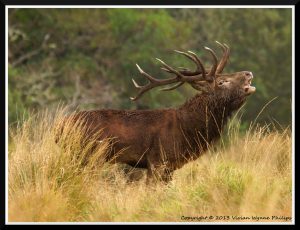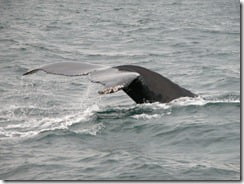
In late September and early October the signature roar of red deer stags (males) echoes around the woods and mountains of Killarney National Park in Co. Kerry, signalling the start of the autumn rut. Our only native deer, the red deer was once common throughout the country, but a combination of excessive hunting and habitat destruction caused populations to dwindle over the years.
The famous herd in Killarney, which consists of around 700 animals, is now the only herd of truly wild native deer in Ireland. Although there are herds present in other parts of the country, all have been either established or augmented with introduced animals.
Red deer are Ireland’s largest land mammals. They have a reddish-brown coat, which changes to a brownish-grey in winter, with a creamy patch on the rump and a short beige tail. Stags (males) can reach 120cm (48 inches) at the shoulder, weigh up to 225 Kg (495 lb) and sport large branched antlers. These antlers start to grow in early summer each year and reach maximum size and peak condition towards the end of September ready for sparring with rivals during the annual rut. Antlers are shed between February and April the following year and can sometimes be found lying on the ground in deer country in the early spring. During the rut dominant stags assemble a harem of between ten and fifteen hinds (females) and defend them against all-comers.
Most encounters between stags are settled without fighting: weaker stags are generally out-bellowed by the more vocal dominant males and stand down. However, if evenly matched males come head-to-head then a confrontation is inevitable. Fighting between stags is largely ritualised to avoid serious injury, and involves a trial of strength and endurance. The stags will repeatedly lock antlers and attempt to push each other backwards. Injuries, such as eye-loss and puncture wounds, sometimes occur during such sparring. Winning stags will mate with every mature hind in their harem, while losers are forced to join a bachelor group and will fail mate at all that year.
After a gestation period of 33-34 weeks hinds give birth to a single calf, or, very rarely, to twins. Like other deer species, red deer calves are well developed when born and are able to walk within an hour of birth.
Stags, meanwhile, will be taking advantage of the lush vegetation to grow a new set of antlers and to generally bulk-up for the approaching rut, when they will once more test their strength against rival males. While they are growing antlers are covered with a protective velvety coating of skin and hair. Towards the end of the summer, once the antlers have stopped growing, the “velvet” is shed by rubbing the antlers on the ground, in vegetation or on the bark of trees. This has the added benefit of strengthening the neck muscles that will play an important role in the confrontations ahead.
The red deer’s primary predator in Ireland used to be the wolf. However wolves were exterminated here some 200 years ago and the deer have no natural predators today. Now fully protected by law, the biggest sustained threat to the red deer of Killarney is that of genetic contamination of the population through cross breeding with the introduced Sitka deer (Cervus nippon). Sitka deer were introduced from Japan in the mid to late nineteenth century, and interbreeding between the two species is known to be possible, although none has yet been recorded in Killarney. The situation is closely monitored, with a high priority placed on maintaining the genetic purity of the Killarney herd.









